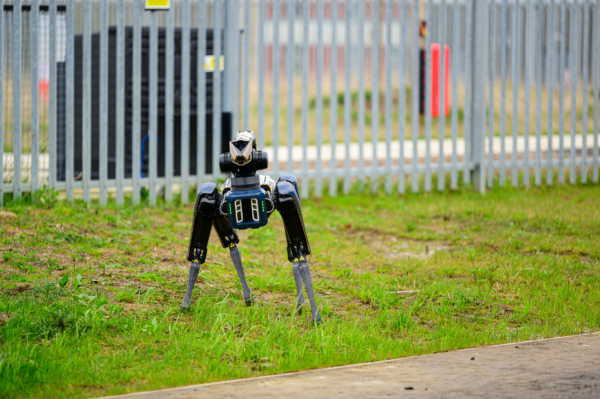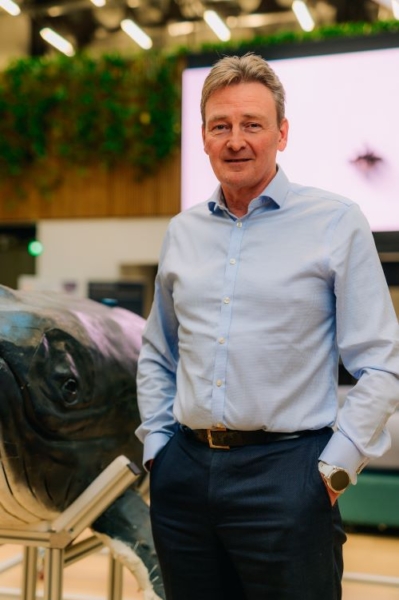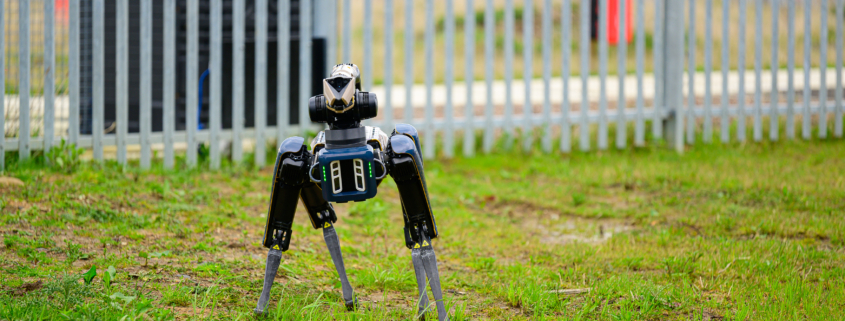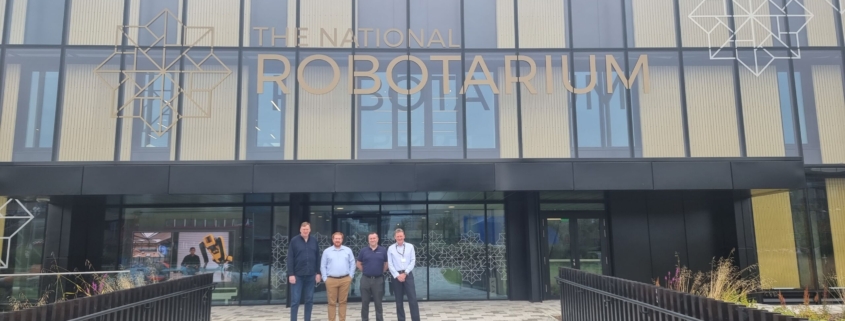Freshwave plants portable 5G in agritech innovation at the National Robotarium
The National Robotarium and Freshwave have joined forces to deploy a portable 5G private network within the world-leading centre for robotics and AI. The 5G private network is being used to test robots with the aim of building the innovation centre’s digital capabilities for undertaking commercial projects.
Spot, a quadruped wireless robot created by Boston Dynamics, is the first robot to be used on the portable 5G private network. Spot is being tested to meet an agricultural technology (agritech) need for a National Robotarium customer and will be streaming live video content, doing 3D mapping, and infrared assessments when out in the field. The real-time data Spot collects will be used to improve agricultural productivity and sustainability.
Portable 5G private networks are unlocking exciting benefits in the agritech sector. They provide high-speed, reliable internet access in remote or rural areas where traditional broadband is often limited, enabling better connectivity for devices and systems on the farm. The low latency offered by 5G allows real-time data collection and analysis, supporting immediate decision-making for precision agricultural tasks, such as crop monitoring and equipment adjustments. And they can be easily deployed and moved as needed, making them ideal for seasonal or shifting agricultural operations where fixed infrastructure is impractical. The UK agritech industry is predicted to hit £15.6 billion by 2026.

Steve Maclaren, Chief Operating Officer at the National Robotarium, said: “I’m delighted with what we’ve achieved with Freshwave’s portable 5G private network so far. Robots have the potential to transform the agricultural sector, similar to the way equipment such as tractors did so many years ago, but they need the right networks to power this data-driven approach.
“This portable 5G private network is going to allow us to unlock exciting new applications for our customers. One day we’ll see multiple robots in the field working together on different tasks, from weed removal to nutrient-analysis to pesticide application, creating a co-bot (human and robots working together) workforce to achieve results that simply aren’t possible without harnessing technology. It’s truly a gamechanger and the future of agritech.”

Steve Maclaren, Chief Operating Officer, The National Robotarium
Tom Bennett, CTO at Freshwave, said: “We’re pleased to bring our 5G private network expertise to this project with the National Robotarium. The work the team is doing there is unbelievably cutting-edge and we’re excited to be involved in it.”
Ian Sharp, Head of Business Development at The Scotland 5G Centre, Scotland’s national centre with wide expertise on private 5G network adoption and advanced wireless connectivity, attended a demonstration of Spot on the portable 5G private network at the National Robotarium.
Ian said: “The demonstration of this robot, powered by Freshwave’s portable 5G private network, showcases the transformative potential of 5G to revolutionise agritech. It’s exciting to see how 5G can address the unique challenges of rural and remote areas, making sustainable and efficient farming more achievable.”
Freshwave’s 5G private network can be quickly deployed and the pop-up mast is self-contained and powered by a generator, so it’s completely portable. It uses n77 spectrum Freshwave secured from Ofcom. The network was deployed in a matter of days.
The 5G private network has been deployed under a Memorandum of Understanding (MOU) between the National Robotarium and Freshwave. The MOU combines the National Robotarium’s expertise in robotics and artificial intelligence with Freshwave’s success in delivering neutral host-led private networks. The MOU will see the two organisations collaborate in testing robotics on private 5G networks on an ongoing basis.










